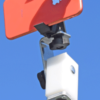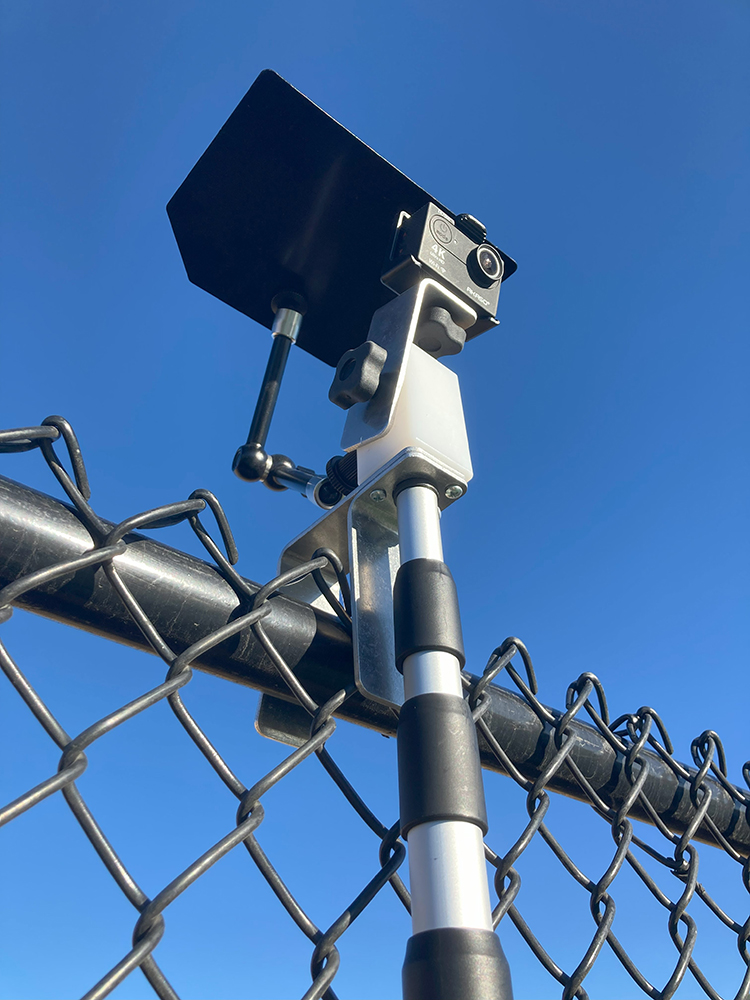Part 1: The Camera
Filming a tennis match can be a challenge to say the least. What camera to use, where to position it, what exactly to record, etc. The purpose of this series of posts is to take a brief look at all of these elements, starting with what camera to use. Note that I don’t discuss HD – it is assumed that all of these cameras are HD.
Which camera to use will depend on your exact needs (and your budget of course). Let’s break this down:
Category 1. If you are a high-performance coach with nationally ranked players, you might require some super slow motion to show to your students, aimed towards making tiny adjustments in technique. Maybe you also want 4k resolution to see minor grip variations. In that case, you probably need a more expensive camera that records at least 120 frames per second (fps) and has a 4k resolution. The specs on the GoPro Hero4 Black (as of June 2017) are as follows:

4k GoPro Hero 4
The following settings are supported on the Latest GoPro:
- 1440p: 24; Ultra Wide, Medium
-
1080p: 30, 25, 24; Ultra Wide, Medium, Narrow -
1080p SuperView: 30, 25, 24; Ultra Wide, Medium, Narrow -
720p: 60, 50, 30, 25; Ultra Wide, Medium, Narrow -
720p SuperView: 60, 50; Ultra Wide, Medium, Narrow -
Battery Life: About 1 hour - Price: about $300

The other top contender is the Muvi K-2 Sport
- 1080p: 60, 48, 30, 24 Wide, Medium, Narrow, Small
- 960 (4:3 aspect ratio): 60, 48 Wide
- 720: 120, 60 Wide
- Battery Life: 2.5 hrs.
- Price: About $200
- Check this link for extensive info on the K-2 Sport
Bottom Line: The GoPro has the brand and more extensive settings. And while these might be nice to have for some people, we find that the Muvi K-2 works great, and the longer battery life means you are not going to lose that dynamite match-point! For tennis, we have used the Muvi K-2 extensively and generally use the 1080p, 30 fps mode. Our GoPro Hero3 Silver sits in the closet, literally.
Categories 2 and 3. If you coach 4.5 players and below, it probably doesn’t make sense to spend a lot of money on a fancy camera. You can get by fine with the K-2 at 30 or 60 fps. And at that level, just showing someone that they are taking their racquet too far back, or swinging too late or any of a number of obvious issues, doesn’t require super slow motion. But if you want to freeze frame something, it is a matter of the software and just stopping the film.
Category 3. If you are a player filming for your own requirements, you probably want to do both technical analysis and match play, so the answer to which camera would depend on your level. Again, the Muvi K-2, or any camera with similar specs, will work fine. For myself, as a 4.5 senior player, I’m more interested in the match play – did I make tactical or strategic errors?
In the middle are the consumer camcorders around the $200.00 to $400.00 range. They would seem to be perfect except for one thing – many of them do not have a wide enough field of view (FOV) by themselves, and many of them don’t have the necessary threads to accept a wide angle lens. You need to be careful with these, even though they may say they have a built in “wide-angle”, they really don’t have a wide enough angle for a tennis match. You need at least 75 degrees, and 85to 90 degrees is preferred (if not more!)
So to sum up:
- Expensive cameras usually will take on a wide angle lens, plus you can do super slow motion if you really need to. The downside is the cost.
- Inexpensive “pocket cameras” like the Kodak Playsport Zx3 or Zx5 work well for overall match filming and at many levels, for general stroke analysis. The only caveat is to make sure that they will 1) accept a wide angle lens, and 2) have adequate battery life. The Kodaks pass both these criteria, with the Zx5 going at about 2.5 hrs. The Zx3 is less at two hours but you can easily replace the battery. Some others may last only an hour before you have to charge them. The downside is that the video won’t be as “crisp” as some. You will also get a slight barrel roll effect on the near baseline.
- Medium priced cameras are probably fine as far as quality, but you have to make sure of the battery life AND that it will accept a wide angle lens.
A last option in a class almost by itself is the GoPro. Somewhat expensive, but a lot of people like this camera. I personally like it, but you might want to make sure you can get what they call a ‘narrow’ field of view at 90 degrees. Not to say that 120 degrees doesn’t cut it, but there time you don’t want such a wide angle. More on this in the next post.
Wait, you say, what about WiFi cameras? Good question, worth saving for the next blog post (to be continued)














0 Comments